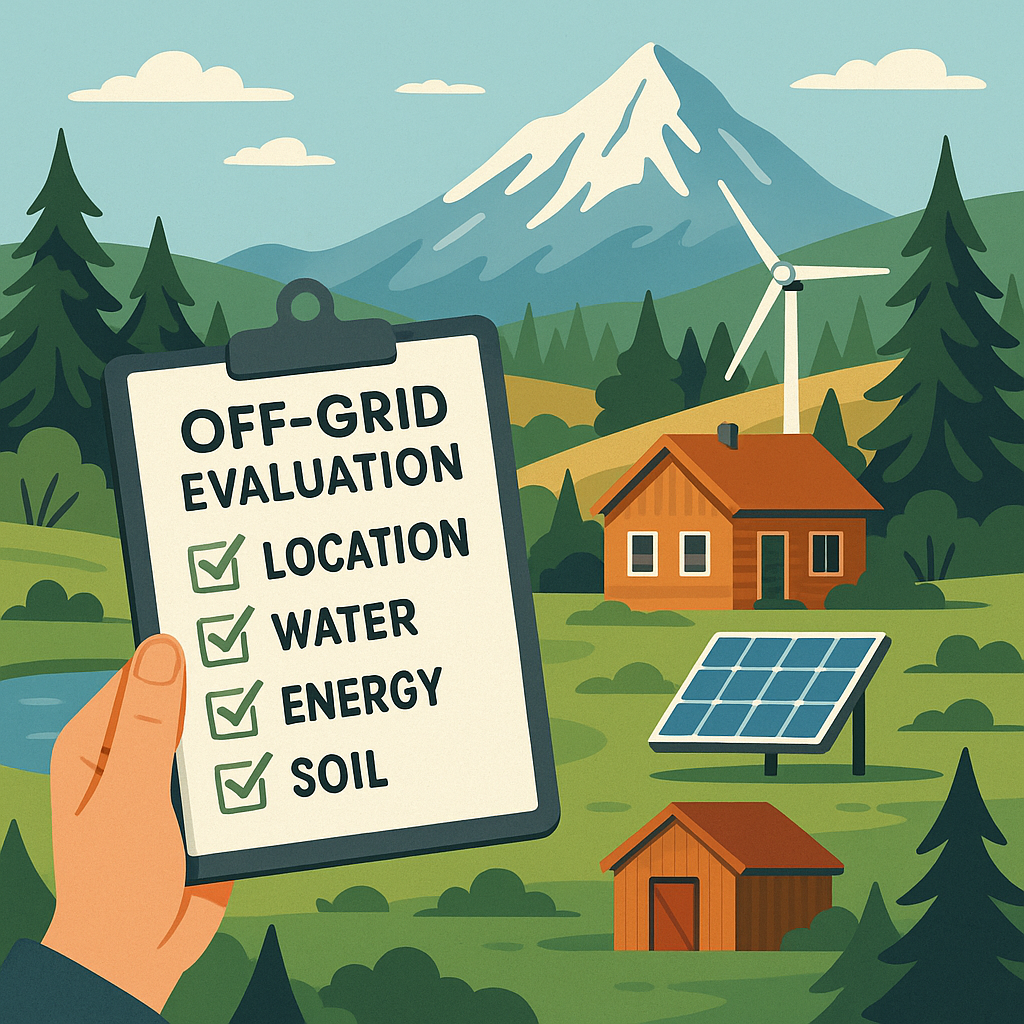AFM NEWS
What to Look for When Buying Off-Grid Land

The Pacific Northwest (PNW) is known for its natural beauty and ecological diversity—qualities that make it an ideal region for those seeking a self-sufficient, off-grid lifestyle. From Oregon’s rugged coastline to Washington’s forested mountains and arid interiors, the region offers a wide range of environments to choose from.
However, living off-grid successfully depends on more than just scenic views. Choosing the right property requires careful evaluation of water, climate, energy, and infrastructure needs. Here’s a comprehensive guide to help you assess land for off-grid living in the Pacific Northwest.
1. Location and Climate
The PNW features a broad range of climates, so it’s important to select a property that aligns with your preferences and agricultural goals.
Western Oregon & Washington: Milder winters, cooler summers, and high rainfall. Ideal for gardening and water catchment—but you’ll need to manage excess moisture and mold risks.
Eastern Oregon & Washington: Drier, with hot summers and cold winters. Solar power is more viable here, but you may need irrigation systems due to low rainfall.
Tip: Research average rainfall, growing seasons, and temperature extremes before deciding on a location.
2. Water Availability
Water is a cornerstone of off-grid living. Ensure the property has sustainable, legal water sources:
Natural Water: Streams, rivers, ponds, or springs can support irrigation or micro-hydro systems—but may require permits.
Wells: Check if a well exists or if drilling is viable. Investigate local water tables and quality.
Rainwater Harvesting: Especially effective in western regions. Confirm roof and storage system potential.
Plan for water collection, storage, purification, and legal access to ensure long-term reliability.
3. Energy Potential
Off-grid living requires producing your own energy. Evaluate the property’s potential for:
Solar Power: More viable east of the Cascades due to greater sun exposure. Western PNW may require battery storage or backup generators.
Wind Power: Ideal for exposed ridges or valleys with consistent airflow.
Micro-Hydro: A powerful option if the land includes a year-round stream with sufficient flow and elevation drop.
Use solar mapping tools or consult local data to assess energy feasibility before investing.
4. Soil Quality and Agricultural Use
To grow your own food or raise animals, you’ll need fertile land.
Soil Testing: Analyze pH, composition, and nutrients. Poor soil may require amendments or regenerative practices.
Topography: Flat or gently sloped land is best for gardens and building. Hillsides may require terracing but help with drainage.
Timber & Forest Resources: Wooded land can provide firewood, shelter materials, and windbreaks—if managed sustainably.
Evaluate land for year-round food production and livestock support.
5. Accessibility and Legal Considerations
Off-grid properties are often remote, but accessibility and legality matter.
Road Access: Ensure year-round access. Snow, mud, or poorly maintained roads can limit mobility.
Zoning & Permits: Confirm zoning allows for alternative structures, renewable energy, septic systems, and livestock. Look into water rights and build permits.
Waste Systems: Plan for composting toilets, graywater recycling, or septic systems that meet health codes.
Check county regulations early to avoid unexpected legal hurdles.
6. Wildlife and Natural Hazards
The PNW’s wilderness is beautiful but can pose risks.
Wildfire Risk: A growing concern in Oregon and Eastern Washington. Check local fire risk maps and create defensible space.
Flood Zones: Use FEMA flood maps to determine if the land is vulnerable to rising water.
Wildlife Protection: Expect deer, bears, cougars, and rodents. Plan for fencing, secure structures, and food storage.
Choose a location with manageable risk levels and have a wildlife mitigation plan.
7. Community and Local Resources
Off-grid living doesn’t have to mean isolation.
Off-Grid Communities: Look for existing networks or neighbors with similar lifestyles who can share knowledge or tools.
Proximity to Supplies: Even with self-sufficiency, you’ll need occasional access to groceries, fuel, medical care, and hardware stores.
Assess how far you are from essential services—and how often you'll need to reach them.
Conclusion
Finding the perfect off-grid property in the Pacific Northwest involves much more than scenery. To thrive, you'll need a location that supports water access, energy generation, food production, legal compliance, and sustainability.
By evaluating these key factors, you can find land that meets your needs and supports a long-term, resilient off-grid lifestyle.
